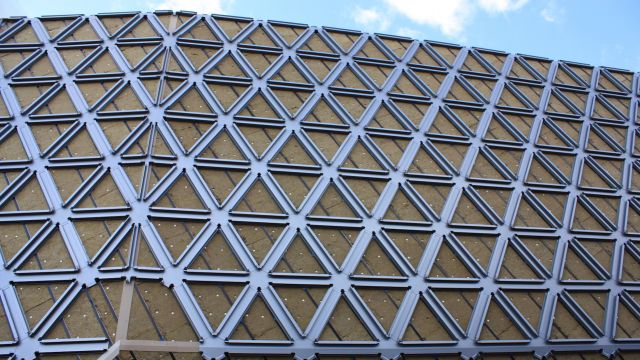Air and Moisture Control Tech Talk Q and A
By MASONRY Magazine and Tiffany Coppock
Mineral Wool and Managing Moisture in the Masonry Enclosure
Like the many benefits of masonry walls, the performance qualities of mineral wool are often taken for granted. While mineral wool is renowned for its fire resistance, it delivers many additional benefits in the masonry enclosure – including moisture mitigation. Below, we look at how mineral wool can not only help manage moisture, but deliver other performance benefits as well. We also look at how mineral wool is evolving from a material perspective. New options are available in a variety of compressive strengths, making it easy for contractors to match the mineral wool to the needs of a particular job.
1. How does mineral wool support moisture management in the masonry enclosure?
Mineral wool can both resist moisture and allow for excellent vapor diffusion through a wall assembly to help a masonry veneer wall perform well. While there is a misconception that mineral wool insulation for the exterior wall cavity is the same as batt insulation for stud cavity applications- this simply isn’t true. Mineral wool continuous insulation (ci) is engineered to be hydrophobic and resist moisture absorption. It also is resilient when exposed directly to water in that it drains, dries, and returns to normal thermal performance very quickly. While it’s always a good practice to protect materials on the construction site, the drying properties of mineral wool help it withstand exposure to rain and snow on the jobsite. On the topic of drying, mineral wool is highly vapor permeable when compared to rigid plastic insulations. This means high vapor drive can escape the building more quickly, reducing the risk of condensation, structural damage, and mold or mildew. Certainly, if a vapor barrier is required in the exterior wall cavity, this may be achieved through the use of a vapor retarding air barrier; but using mineral wool ci offers the designer flexibility in this design decision.
2. What new innovations or products are being introduced to the mineral wool marketplace?
As new claddings and attachment systems are being utilized in today’s building enclosures, there has been an increased need for higher compressive strength mineral wool continuous insulations that work with girt and other cladding attachment systems to maintain compression at fasteners. This may be seen on masonry jobs where different claddings (terra cotta for example) are integrated as the fire properties of mineral wool allow for transitions that prevent flame spread.
3. For the masonry contractor, how do these new offerings ease installation across multiple applications?
High compressive strength mineral wools are more robust than previous versions, and therefore able to withstand handling more readily. The extra weight of the product may also be advantageous in high-wind installation locations. When installed under girt systems for the previously mentioned claddings such as metal panel, plastic panel, etc., the installation process can be streamlined as the insulation may be secured, studs marked, and then the furring or girt systems attached over the insulation. This installation process also helps reduce the energy lost at penetrations through the insulation.
4. What are some key benefits mineral wool offers beyond moisture mitigation?
The most well-known feature of mineral wool is its non-combustibility. Like masonry, mineral wool is resistant to fire. For this reason, it is recommended particularly behind combustible claddings and in walls with non-combustible claddings. While mineral wool is often used for fire-stopping at openings and penetrations at a minimum, it can certainly be used in the entire wall as continuous insulation. At Owens Corning, we are still quantifying acoustic performance, but existing studies demonstrate significant acoustic performance compared to foam plastic insulation which may contribute to better-performing exterior walls—particularly behind low mass, thin materials such as metal or plastics. As mentioned earlier, the vapor permeable qualities of mineral wool allow for vapor inside the building to dissipate. And used as a continuous insulation, mineral wool does not limit design options like foam plastics.
5. Considering other claddings – such as terra cotta – mineral wool delivers performance benefits beyond traditional masonry. What are some new findings regarding mineral wool that suggest it should be viewed in terms of its compressive strength vs. density?
As mentioned earlier, mineral wool ci can be used beneath multiple cladding types. Often, masonry veneer is integrated with terra cotta to contribute special accent features, and the same or similar trades are installing these materials. Terra cotta may be attached with traditional ties, but is increasingly attached with unitized cladding attachment systems engineered to resist live and dead loads placed on the terra cotta. These systems allow for a faster installation with the ability to adjust as the installation occurs. In these types of applications, foam plastic may have originally been specified because higher compressive strength was required. Yet as terra cotta is now manufactured with more hollow components, it is no longer considered a high-mass material capable of providing thermal protection to the combustible plastics below.
As a result, mineral wool has increasingly become the choice for continuous insulation below terra cotta. Traditionally, mineral wool products were specified by density rather than compressive strength – for example, the foam plastic counterparts as a way of resisting compression when attachments were secured through the material. However, the manufacturing processes have changed to create lower density mineral wools with the same or better compressive strengths.
As a result, the specification language must also evolve to indicate the design needs of compressive strength over simply specifying the density of the material. Following up on these building science findings, Owens Corning® Thermafiber® recently introduced three new high compressive strength Thermafiber® Rainbarrier®ci offerings, providing AEC professionals with a comprehensive portfolio of compressive strengths to meet the demands of various claddings.
About the Author



















